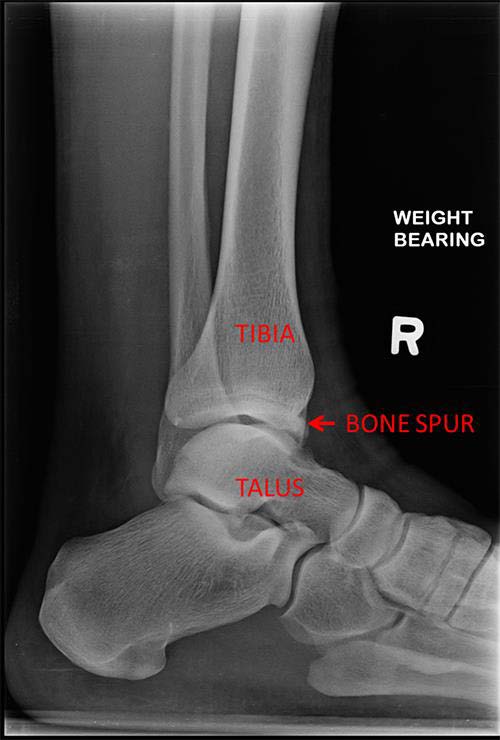Ankle Cheilectomy
An ankle cheilectomy is a surgery that removes a bone spur from the talus or tibia, which are the lower and upper bones of the ankle joint.
The goal of an ankle cheilectomy is to relieve ankle pain caused by bone impingement or pinching at the front of the ankle. While this may be a sign of early ankle arthritis, an ankle cheilectomy is a joint preserving option that may help with pain and function and buy time before additional treatment is needed.
Diagnosis
If you have pain at the front of the ankle that does not improve with non-surgical treatment, your foot and ankle orthopedic surgeon may consider an ankle cheilectomy. The pain is usually worse with upward bending (dorsiflexion) of the ankle. The pain typically is caused by a bone spur.
An ankle cheilectomy is not recommended if you have severe ankle arthritis. Removal of bone spurs in arthritic ankles typically does not improve pain.
Treatment
An ankle cheilectomy can be performed arthroscopically (minimally invasive) or with an open procedure. The choice for open or arthroscopic procedure is made based on the size of the spur and the preference of the surgeon.
- Arthroscopic: When an ankle arthroscopy is performed, a camera is placed into the ankle joint through a small incision. The cartilage and soft tissues inside the ankle joint are examined and the bone spur is seen with the camera. It is removed with an instrument such as a burr or chisel placed into the ankle through a separate small incision.
- Open: An incision is made at the front of the ankle. The ankle joint is opened, and the bone spur is identified and removed.

Recovery
Activity after surgery may depend on the size of the bone spur and the degree of swelling or bleeding that occurs during surgery. There may be a period where you may not be allowed to put any weight, or only partial weight, on the ankle. This usually lasts for 1-3 weeks. Physical therapy is then typically started, and weight bearing and activity generally are increased as tolerated.
Risks and Complications
All surgeries come with possible complications, including the risks associated with anesthesia, infection, damage to nerves and blood vessels, and bleeding or blood clots. Patients may experience loss of feeling at the top of the foot after this procedure. Pain may not improve after an ankle cheilectomy, and an increase in ankle pain can occur. While many patients do experience a significant reduction of pain, there is a risk of recurrence of the pain after surgery as underlying arthritis progresses. However, the overall complication rate for this surgery is low.
FAQs
Will I regain range of motion in my ankle if the bone spur is removed?
Range of motion may increase after removal of bone spurs. This does not always occur as soft tissues such as tendons and ligaments around the ankle may still be tight, and these tissues also affect ankle motion. Often, even if motion is not improved, the pain from the bony impingement improves.

